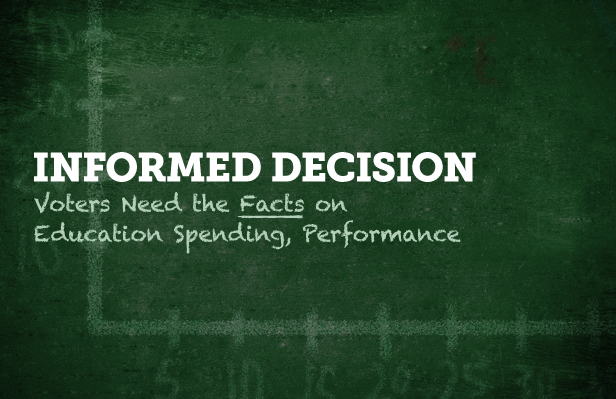Commentary

Misconceptions Cloud School Funding Debate
Note: This commentary appeared in the Delaware County Times, Bucks County Courier Times, and Pottstown Mercury.
Would you believe that nearly three-quarters of Pennsylvania’s voters underestimate how much money we spend on schools? Shocking but true, according to a new poll testing the public’s knowledge of school funding facts.
Heading into a gubernatorial election season where both sides are airing ads centered on education—some claiming Gov. Corbett “cut $1 billion from education” while others say he “increased funding for public schools by $1.5 billion”—it would be no surprise if voters are confused.
To see which way the public is leaning—both before and after they’re given the cold, hard facts—Commonwealth Foundation commissioned a poll on education spending and achievement.
The results show a remarkable knowledge gap.
When asked how much Pennsylvania spends on education per student, 73 percent underestimated the actual amount of $14,600. And the average guess wasn’t even close, at 46 percent lower than reality. Voters also underestimated the average teacher salary ($63,000) by 26 percent.
Notably, more than two-thirds of voters were surprised to learn that Pennsylvania spends $2,900 more per student than the national average.
These results demonstrate that while many voters have a modest understanding of education spending, there’s much work left to be done.
Indeed, after hearing the facts on state spending, minds changed. Support for funding increases dropped by 9 percent, and a majority of voters (54 percent) said they would be unwilling to personally pay higher taxes to increase education spending.
So who’s behind the misconceptions? The Pennsylvania State Education Association—the state’s largest teachers’ union—and the American Federation of Teachers have made huge investments in mailers, newspaper ads, and magazines claiming that Gov. Corbett and lawmakers cut more than $1 billion from public schools.
The reality is, federal stimulus dollars were used to balance the state budget during the Rendell administration. After three years, those temporary federal funds—including $1 billion in funding to public schools—disappeared. To compensate, Gov. Corbett and lawmakers replaced some of that with an increase of $500 million from state funds to public schools.
At the end of the day, school districts did have less money to spend in 2011-12, but spending from state tax dollars actually increased.
Since then, state aid to public schools has continued to climb, and totals more than $10 billion in the current budget—a record high that’s greater even than when state and federal stimulus dollars were combined.
Teachers’ union leaders from PSEA and AFT, however, argue that payments for teachers’ pensions shouldn’t count because they are not “classroom spending.” Yet every governor since Milton Shapp in the early 1970s has included pension costs as support for public schools.
The teachers’ unions’ choice to ignore decades of standard practice makes it easy to dismiss the pension crisis facing our state and schools. It also creates a perverse incentive to underfund pensions and spend that money elsewhere—pushing pension costs off onto future generations.
In short, school districts have more funding than ever before, but skyrocketing pension costs are requiring teacher layoffs and cuts like those in Philadelphia. Indeed, Philadelphia’s pension costs have risen by $130 million in the past six years—far more than a proposed cigarette tax would generate.
Over that period, school districts’ combined payments for employees’ retirements grew by $2 billion—a stunning 500 percent increase. To put it in perspective, just that increase could pay the average salaries of approximately 30,000 teachers.
At the same time, school districts have built up record-high financial reserves of nearly $4 billion. While schools are rationally preparing for the continuing spike in pension costs, it would be better for taxpayers if schools put these reserves into the pension fund now and earned investment returns on them.
At the end of the survey, we asked how voters would rate public schools. When informed of Pennsylvania students’ scores on “The Nation’s Report Card,” 53 percent said our schools (overall) deserve a grade of D or F.
This is inexcusable—but transformative change may never happen if we’re stuck arguing over the facts.
Voters need accurate information to make informed decisions about how we fund public education. Anything less puts our children’s learning environment at risk.
# # #
Nathan A. Benefield is vice president of policy analysis for the Commonwealth Foundation (CommonwealthFoundation.org), Pennsylvania’s free market think tank.